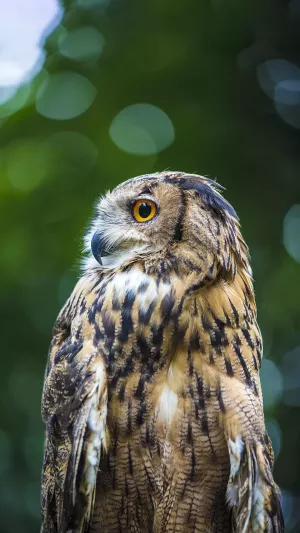In many places, owls are considered to be birds representing "bad luck" and "death", so there are "horror" titles such as "Mourning Bird" and "Soul Chasing Bird".
So why are owls considered "ominous birds"? What is a real owl like? This article will restore a real owl from a scientific point of view.
Humans usually have several stereotypes about birds: they are flighty, small, and melodious. And owls only account for one of these three points: they can fly.
In terms of body size, birds under the order Owlforms are larger than animals under other orders (except Falconiformes).
The most important thing is that the owl has a big head and a pair of "unfathomable" big eyes. The characteristic of a common animal (cat) has gone to a bird, so the owl looks relatively special.
In addition, owls like to make a variety of low-pitched sounds, which are very different from the tactful calls of most birds. The most important thing is that they like to call at night.
Therefore, the appearance of owls and their night calls is one of the reasons why they are considered "ominous birds".
A long time ago, people believed that just hearing the laugh of an owl meant that someone was about to die. The owl's laughter was fast-paced and hoarse, like an old grandfather's voice, which was especially harsh in the silent night.
Many people say that this is the owl inducing the soul. It is because of this saying that the owl has become a "mourning bird", which is an ominous bird.
There is a saying in many places that an owl will spit out a "hairball" before dying, and this hairball is the "essence" of the owl. Others say that an owl's head can turn a full circle, an ability most animals don't have, so they are more convinced that owls are "weird".
But these are all misunderstandings about owls.
In fact, an owl's laughter is just a type of call. As we all know, a bird's call is changeable, whether it is tactful or not, and the same is true of owls. Their different calls are just different ways of expressing their feelings or communicating with their peers.
Owls do spit out "hairballs," but they don't spit out "hairballs" either before they die, nor are they "essential." As a carnivorous bird that mainly feeds on mice, owls usually swallow bones and fur when eating mice (owls have no teeth and do not chew).
Therefore, in the owl's digestive tract, after the flesh and blood are digested and absorbed, the remaining hair and bones will be "ruminated", which is the origin of the "hairball".
The head of an owl can indeed rotate by a large amount, but it is by no means a circle, but 270°.
That's because owls don't have eyes on the sides of their heads like other birds, looking in different directions, so the bird only needs to turn its head slightly to see nearby food. But the owl's eyes are on the same plane and forward.
The advantage of this eye structure is that it can maximize the front view, but the disadvantage is that it is difficult to see things around.
Therefore, in the long evolution, in order to be able to detect the surrounding prey and danger in time, the head of the owl has become flexible.
It is said that owls are "ominous birds" mainly because people lack scientific understanding of owls, which are nocturnal, strange-looking, and peculiar-calling animals.
Real owls don't have a keen sense of smell, and they don't know when people will die, and their main prey is mainly mice, so they are real "beneficial birds".





